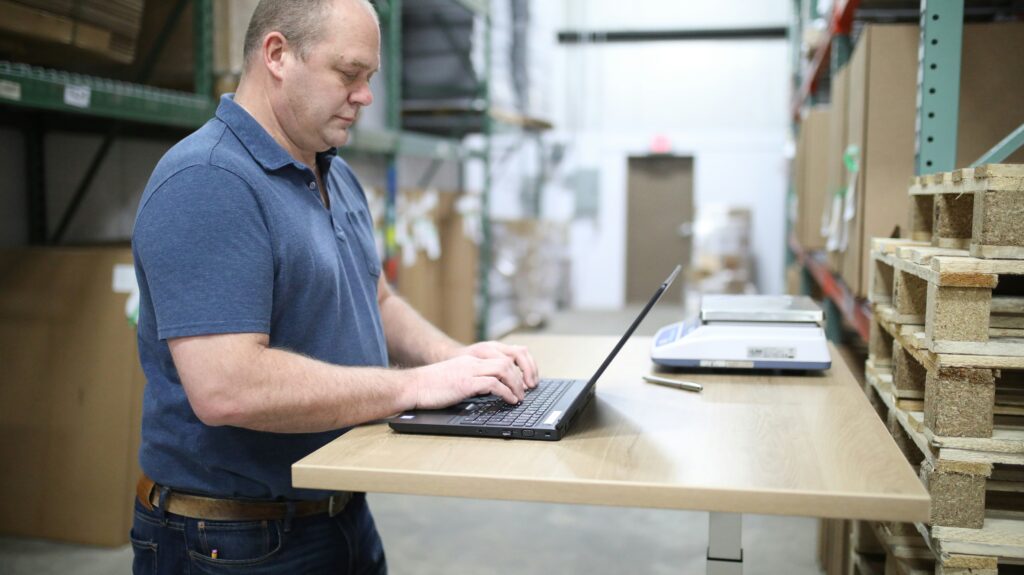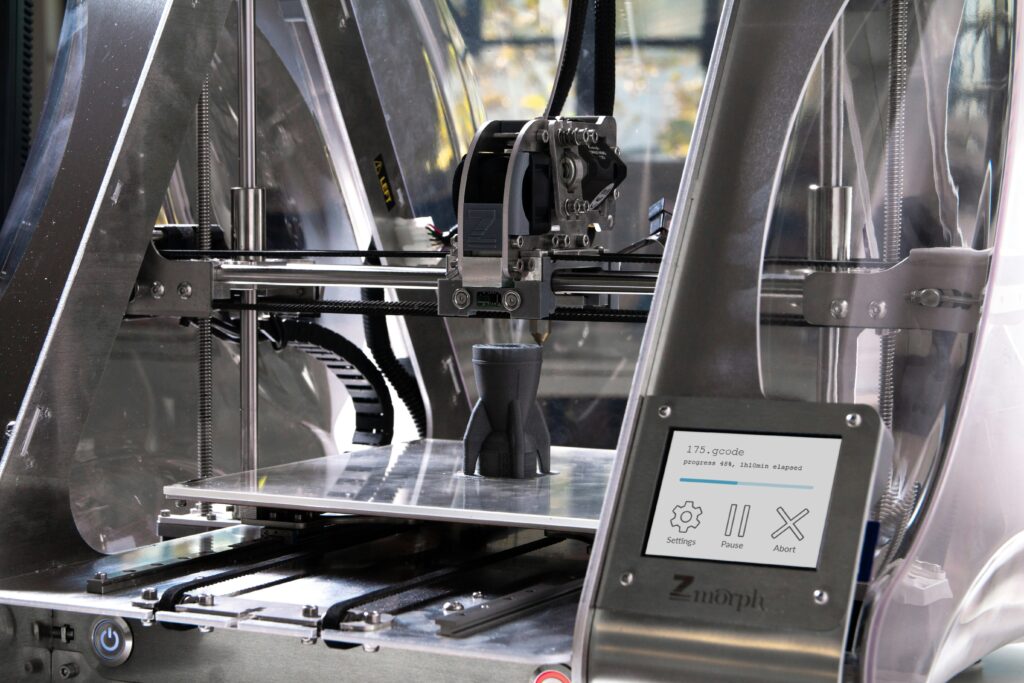Industrial printers have evolved significantly from basic mechanical devices to sophisticated machines with advanced features like digital integration, 3D printing capabilities, and smart technology, enhancing efficiency and productivity for businesses worldwide. Industrial printers contribute significantly to the efficiency, accuracy, and agility of manufacturing and production sectors, and technological advancements provide innovative solutions to the challenges facing these industries. GSM Barcoding are experts in the latest printer technology.
Read more: The Evolution of Industrial Printers: Basics to Advanced Features
A brief history of industrial printers
The first recognised industrial printers appeared in the 15th century with the invention of the printing press by Johannes Gutenberg. However, it was in the Industrial Revolution of the late 19th century that industrial-scale letterpress printing became widespread. This method involved arranging movable type on a press, applying ink, and transferring the image onto paper.
In the early 20th century, offset printing began to replace the letterpress. Offset printing involves transferring an inked image from a plate to a rubber blanket before it is printed onto a surface. It allowed faster and higher-volume printing, making it suitable for industrial applications and dramatically reducing the cost of printed materials.
Fast forward to the mid-20th century and the introduction of line printers and dot matrix printers. Line printers produced a line of text at a time by striking a ribbon against the paper, while dot matrix printers used a matrix of pins to create characters and images. These printers were commonly used for industrial and business applications as a faster alternative to manual or typewriter-based methods.
The integration of computers into printing processes changed everything. Computer-controlled printers allowed for more precise and flexible printing, enabling the customisation and the automation of printing tasks in industrial environments. Digital label printing supports operations efficiency, digitally connecting tangible products to business operation systems via the use of scanners and mobile computers.
How technology is driving innovation in industrial printing today
Smart IOT printing
Smart printing solutions harness modern technologies to enhance efficiency, security, and user experience. They can connect to networks, cloud services, and other devices, enabling seamless communication. This connectivity facilitates remote monitoring, management, and control of printing processes. Smart printing significantly reduces waste, allowing the development of more eco-friendly printing solutions.
Smart printers enable remote management, allowing IT staff to monitor and troubleshoot printers from a central location. This reduces downtime, enhances maintenance efficiency, and contributes to overall system reliability. It also offers increased security, as these printers often have built-in features such as encryption, user authentication, and secure release printing. Modern systems also work in conjunction with mobile device management software to cover smartphones, tablet computers, and laptops.
Automation is a key component of smart printing solutions; they can be integrated into broader workflow automation systems, streamlining document processing and distribution. Automated workflows enhance productivity by reducing manual intervention in printing tasks, and a networked solution allows multiple users to manage label designs and print.
3D printing

The rise of 3D printing has significantly impacted the industrial printing landscape. 3D printing allows the creation of three-dimensional objects layer by layer from digital models, offering a level of customisation, complexity, and efficiency that traditional manufacturing methods have previously struggled to match.
The unique flexibility of 3D printing promotes continuous innovation as designers and engineers explore novel approaches to product design and manufacturing. This innovation extends to exploring new materials, printing technologies, and post-processing techniques.
Think small
While early printers regularly filled large rooms, modern-day industrial printing solutions can fit in the palm of your hand. Mobile printers can be easily carried around warehouses and workspaces for convenience and flexibility. Zebra barcode scanners, printers, and mobile computers have applications across diverse industry sectors, ranging from warehouses and manufacturing facilities to small businesses.
What’s next for industrial printing?
Many organisations will boost their investments in AI and machine learning technology over the coming years. Printer developers will be looking for ways to integrate AI into their current products and services, aiming to enhance workplace productivity. An area of significant opportunity is Intelligent Document Processing, where vendors can leverage their existing expertise to develop and expand AI solutions.
Join the forefront of industrial printing innovation with GSM Barcoding. Explore our extensive range of state-of-the-art Industrial Printers tailored for efficiency and adaptability in your business operations. Speak to our experts today!


















